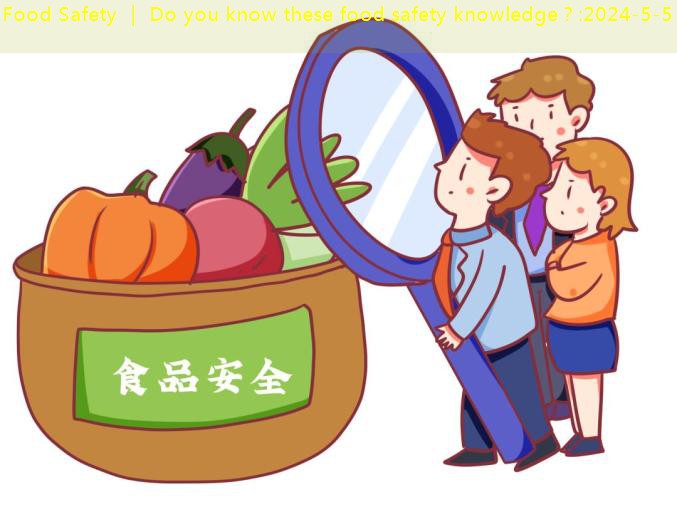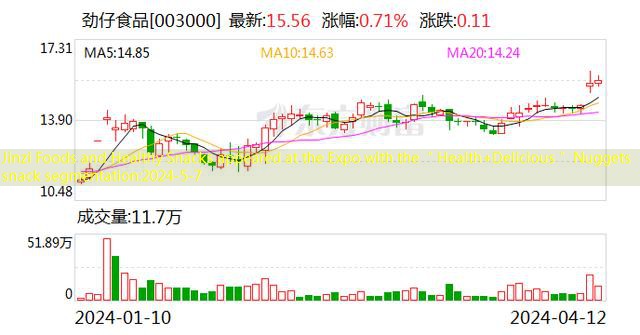
Food Safety | Do you know these food safety knowledge?

Food is food to safety first
Food safety is related to our health
How much do you know about food safety
What is food safety

Food safety refers to the non -toxic and harmless food, which meets the nutritional requirements that should have, and does not cause any acute, subacute or chronic harm to human health.According to Beno’s food safety definition, food safety is “public health issues that are toxic and harmful substances on human health in food.”Food safety is also a cross -disciplinary field that specializes in food hygiene and consumption safety in the process of food processing, storage, sales, etc., to reduce hidden dangers of diseases, and prevent food safety. Therefore, food safety is important.
Food safety common sense

First, when buying food, pay attention to whether the food packaging is manufacturer, the date of production, whether the shelf life is over, whether the food raw materials and nutritional ingredients are indicated, and the “three none” products cannot be purchased.
Second, open food packaging and check whether the food has its senses.Do not consume corruption, fatty acidity, mildew, insects, dirty and unclean, mixed with foreign or other sensory traits.
Third, pay attention to personal hygiene, wash your hands before meals, wash and disinfect your own tableware, do not use unclean containers to make food, and do not throw garbage to prevent mosquito flies from raising.
Fourth, eat less fried and fried food.
Food Safety Five Elements

First, keep clean: wash your hands frequently, tableware, kitchenware, and kitchen environment should be cleaned.
Second, ripening: separate foods, kitchen utensils and containers that processed foods should be separated.
Third, the food should be cooked thoroughly: cooking, cooked, and thoroughly cooking, and consume it again.
Fourth, save food at a safe temperature: After the food is cooled, put the refrigerator and store it. Do not repeatedly freeze raw meat, clean the refrigerator regularly, and do not buy or eat foods that exceed the shelf life.
Fifth, use safe water and food ingredients: Choose fresh vegetables and fruits, use safe water, without unprocessed water.
How to clean fruit and vegetable residue pesticides

1. Washing soaking method: First wash off the surface dirt with water, and then soak in water for 10 minutes to dissolve some pesticides. After soaking, rinse with flowing water 2-3 times.
2. After cleaning, the alkaline water soaking method: Organic pesticides decompose quickly in alkaline environments. First rinse the surface dirt and soak it into alkaline water (generally 5g-10g of alkali noodles in 500m1 water) for 5-15 minutes.Then rinse with water for 3-5 times.
3. Peeling method: Vegetable fruits with uneven appearance or fine hair are more likely to contaminate pesticides, so cutting off the skin is a good way to remove residual pesticides.
Fourth, storage method: Pesticides can be slowly decomposed into harmless substances to the human body with time, so it can be stored in fruit and vegetables that are easy to preserve to reduce pesticide residues through a certain period of time.
V. Heating method: Actarite pesticides are accelerated with the temperature rise.This method first washed the surface pollutants with water, put it in boiling water for 2-5 minutes, and then rinsed with water for 1-2 times.
6. Sunshine sun exposure: After sunlight, the dried vegetables have less pesticide residues.
Precautions for eating habits

First, it is recommended to eat more light nutrients, do not eat or eat less barbecue, spicy hot and other foods.
Second, eat more fresh vegetables and fruits rich in dietary fiber and vitamin. It should be fully cleaned before eating fruits. It is recommended to peel it as much as possible.
3. Pay attention to cooking and cooking, while reducing the intake of cold food.
Fourth, the elderly, children and low -immoxist groups should control the intake of cold foods, and it is recommended to drink water in time, timely, and moderate water.
Fifth, the elderly should be rich and light in food selection.Diverse food.
6. Children and adolescents need to pay attention to diet balance and sufficient nutrition.
Seventh, high -temperature operating populations should replenish water and inorganic salts in time due to a large number of sweats, and increase high -quality protein and other high -quality proteins such as fish and egg milk and potassium and vitamins.
Food Safety Tips

First, when buying food, pay attention to whether the food packaging is manufacturer, the date of production, whether the shelf life is over, whether the food raw materials, nutritional ingredients are indicated, and whether there is a QS logo or not, you cannot buy Sanwu products.
Second, open food packaging and check whether the food has its senses.Do not consume corruption and deterioration, fatty acidity, mildew, insects, dirty and unclean, mixed with foreign or other sensory traits.Smell or drinks have abnormal precipitation, etc.
Third, it is strictly forbidden to buy box lunch or food without a license vendor around the campus to reduce the hidden dangers of food poisoning.
Fourth, pay attention to personal hygiene, wash your hands before meals, wash and disinfect your own tableware, do not use unclean containers to make food, and do not throw garbage to prevent mosquito and flies from breeding.
Fifth, eat less fried and fried foods.
6. Do not rush to eat food, drink water after strenuous exercise.
In summary, the “five main points of food safety” cover the key links of food processing from human to things, and refine the effective experience of preventing food -oriented diseases. It is suitable for food processing, catering units, especially family kitchens.May everyone start from me, pay attention to hygiene, raise good habits, and “get into the mouth” level!



